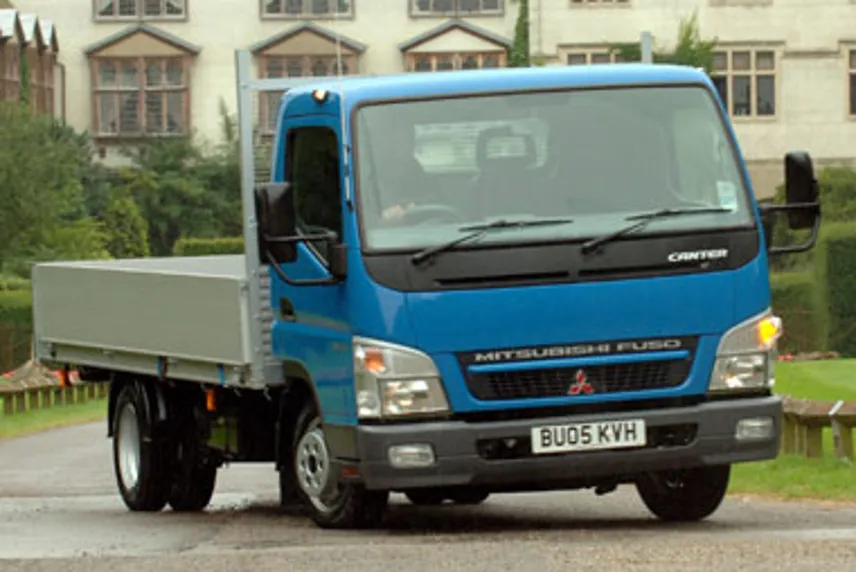Review
Unless you happen to be Japanese, the word ‘Fuso’ is probably unknown to you at present. But things are about to change...
Fuso is, in fact, the name of a huge Japanese truck manufacturer with a £4 billion turnover.
It comes under the Mitsubishi banner and the new Mitsubishi Canter, which was launched in the Uk this month, now proudly carries this moniker for the first time.
Rather confusingly, as DaimlerChrysler owns 85% of Mitsubishi Fuso, you don’t go to a Mitsubishi dealer to buy one of these trucks but have to visit your nearest Mercedes-Benz showroom.
The Canter occupies an odd kind of halfway niche between van and truck.
It is available at 3.5-tonnes, 6.5-tonnes and 7.5-tonnes gross vehicle weight.
At 3.5-tonnes, it looks for all the world like a truck, but can still be driven on a car licence and needs no tachograph.
But it is more than just a platform van – Mercedes-Benz can offer a huge array of variations, including double-cabs, tippers, car transporters, box bodies, cranes, fridge units and many more.
You pay £14,600 for a single-cab chassis and £16,900 for a double-cab (prices ex-VAT) and then negotiate upwards depending on which body you want.
The new Canter is assembled in Portugal and aims to build on the already considerable sales rises of the past few years.
In 2001, the Canter sold just 450 units – last year sales topped the 1,000 mark.
Some 120,000 are sold worldwide every year.
The engines from the old model are carried over.
The 3.5-tonners have a 3.0-litre unit, offering 125bhp at 3,200rpm and 216lb-ft of torque at 1,800rpm.
The bigger models have a 4.0-litre engine, offering 143bhp and 304lb-ft of torque.
The Canter also has a unique standard exhaust brake, which helps slow the vehicle down with extra engine braking.
Flick the windscreen wiper stalk forward and a butterfly valve in the exhaust recirculates gases back into the engine.
This system aims to help drivers with braking in inner city areas and improve the service life of the traditional braking system.
Much of the facelift has taken place in the cab, which becomes bigger and more comfortable.
Overall dimensions increase, door apertures are wider and a larger windscreen is fitted for an extra airy feel.
This equates to more head and legroom for the occupants and the gearstick migrates from the floor to the dash, allowing easier movement across the cab.
The new model features an Isringhausen suspended driver’s seat with a dial for the driver’s weight and fully adjustable steering column.
The dashboard is completely reshaped and central locking and electric windows come as standard, along with a radio/CD player – although we were concerned to find that both a driver and passenger airbag and ABS brakes come as paid-for options, at £300 and £850 respectively.
Other options include air conditioning at £1,050 and metallic paint at £700.
Insulation in the cab has been increased for quieter running.
At 3.5 tonnes and with a single cab, four wheelbases are available – 2,500mm, 2,950mm, 3,300mm and 3,850mm. With a double-cab, only a 3,350mm wheelbase is on offer.
Payload is between 1,265kg and 1,500kg but this excludes the weight of the body.
Mercedes-Benz says safety was at the forefront of the new cab design.
The chassis has been re-inforced, the cab floor strengthened, the steering column is now collapsible and the doors feature parallel cross-frame protection bars.
The dashboard has an impact-absorbing frame and is made from shatter-resistant materials.
Also, vulnerable items such as diesel tanks and batteries are all hidden away in protected areas behind the front axle.















